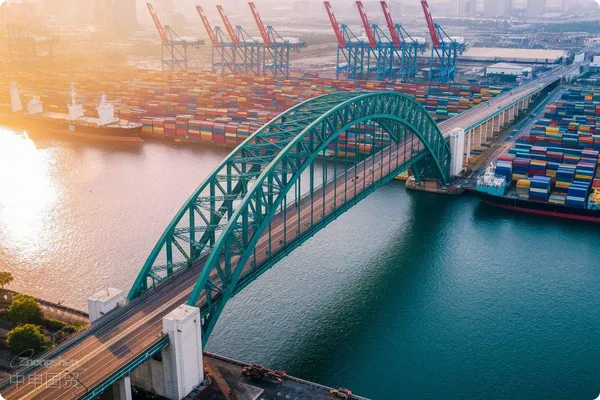- Shanghai Zhongshen International Trade Co., Ltd. - Two decades of trade agency expertise.
- Service Hotline: 139 1787 2118

I. Case Background: When Korean Precision Roll Cores Meet Chinese Manufacturing
In July 2021, we received a challenging commission—to act as import agents for a batch of precision roller cores manufactured in South Korea on behalf of a high-end manufacturing enterprise in East China. As core components of industrial equipment, these products demand extremely high standards in material precision and surface treatment. Additionally, the import process involves multiple challenges, including HS classification, document verification, and inspection criteria.
As a senior consultant who has been deeply engaged inImport RepresentationWith 15 years of professional expertise, we immediately formed a dedicated team and developed the "Yangshan Port Rapid Customs Clearance Plan" for this batch of roller cores valued at approximately $280,000. Ultimately, while ensuring full compliance, the entire process—from port arrival to release—was completed in just 15 working days, 30% faster than the industry average.
II. Breakdown of the Entire Customs Clearance Process: The Devil Is in the Details
1. Preliminary Preparation Phase (Critical 72 Hours)
Before the goods were shipped, we initiated the "pre-clearance" process:
- Please confirm the HS code as 8455.90.00 (Rolls for metal rolling mills), with a tariff rate of 8%.
- Review the KOREA provided by the original manufacturer in South Korea.It is recommended to verify through the following methods:Does the format comply with customs requirements?
- The matching degree between the technical parameters in the pre-review product manual and the declared elements.
- Preparation of Special Items Declaration (Roll Core Surface with Special Coating)
2. Operational Phase of Yangshan Port (Timeline Panorama)
| Link | Time Consumption | Key actions |
|---|---|---|
| Document Exchange and Review | 4 Hours | VerifyMaritime TransportationConsistency between Bill of Lading and Manifest Information |
| Tax declaration and payment | 2 hours | Electronic payment of customs duty + VAT totaling 128,000 yuan. |
| customs inspection | 15 days | Send samples to the laboratory for coating composition testing. |
| Release for pick - up | 1 day | Arrange for customs-supervised vehicles to deliver directly to the factory. |
III. Three Key Risk Control Points for Metal Product Imports
1. Documentation compliance pitfalls
In this case, the certificate of origin initially provided by the client did not include the parameter of roller diameter, so we promptly contacted the Korean supplier to supplement the missing information. Based on experience, common documentation issues for metal products also include:
- The material certificate does not match the declaration (especially the alloy composition).
- The usage description is too general (specific equipment model required).
- Hazardous material labeling is missing (some metal shavings belong to Class 4 hazardous materials).
2. Inspection Response Strategies
For the metal products project that customs is particularly focused on, we have prepared in advance:
- Third-party inspection report (surface hardness test issued by SGS)
- Production Process Flow Chart (Demonstrating No Risk of Waste Entrainment)
- Importer Quality Commitment Letter (clarifying subsequent supervision responsibilities)
3. Logistics Time Efficiency Control
By adopting the "Three Synchronizations" strategy to compress time:
- Customs declaration and bill of lading exchange are conducted simultaneously.
- Tax payment and inspection appointment synchronized operation
- Arrange the transportation fleet in advance during the testing period.
IV. Industry Insights: Trends in Metal Product Imports
Based on this case study, we have observed three significant changes in recent years:
- Intelligent customs supervision: Yangshan Port has achieved intelligent image review with CT scanners, allowing clear identification of the internal structures of metal products.
- Trade compliance pre-positioningThe "advance declaration" system implemented since 2021 has moved the document review process forward.
- Shift the focus of inspection: Transitioning from traditional visual inspections to substantive verification of material composition, functional uses, and other aspects.
Practical suggestions for importers
Based on over 200 metal product import cases, we have summarized the following experiences:
- Choose the correct declaration elements: For roller core products, it is necessary to declare three core parameters simultaneously: diameter, roller face width, and material.
- Make good use of free trade policies: The "split delivery and consolidated declaration" model at Yangshan Port can reduce logistics costs for frequent imports.
- Establish emergency plans: It is recommended to reserve a 10% time buffer to accommodate potential laboratory testing.
- Emphasize follow-up management: Improve import records to facilitate the application for Customs AEO certification.
The success of this case lies not only in our familiarity with the latest customs announcement, "Announcement on Optimizing the Inspection Process for Imported Roller Products" (No. 12 of 2021), but also in our deep understanding of the characteristics of the metal products industry. When the client's production line received the batch of roller cores on schedule, the comment "Truly a professional institution" was the best affirmation of our work.
In theimport and exportIn every industry, each product has its unique passcode. If you're planning to import precision instruments or metal products, feel free to reach out—our 15 years of industry expertise might just bring you unexpected solutions.
Related Recommendations
? 2025. All Rights Reserved. Shanghai ICP No. 2023007705-2  PSB Record: Shanghai No.31011502009912
PSB Record: Shanghai No.31011502009912










